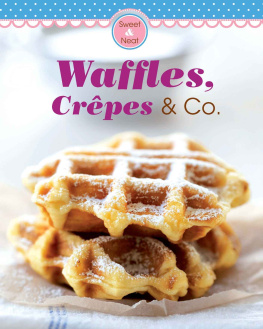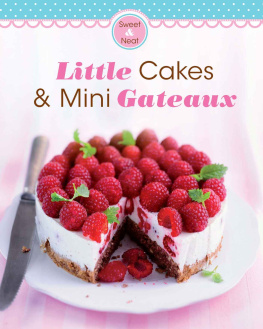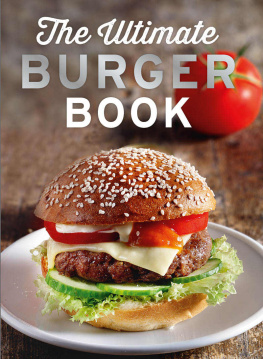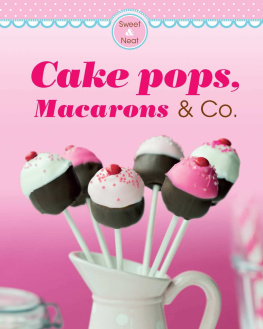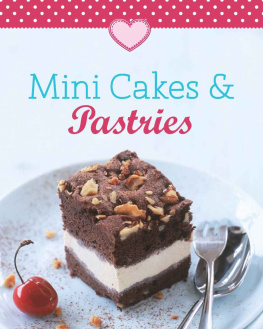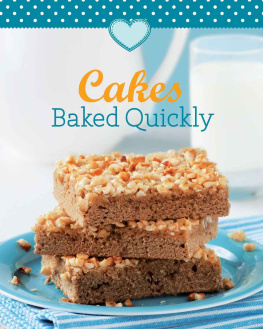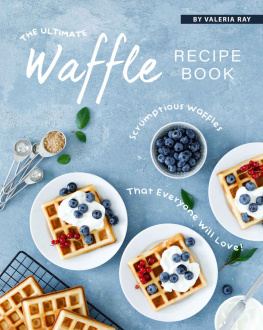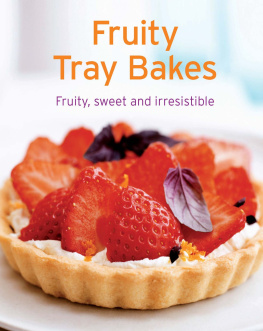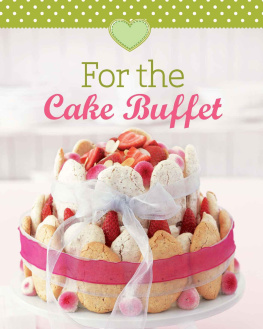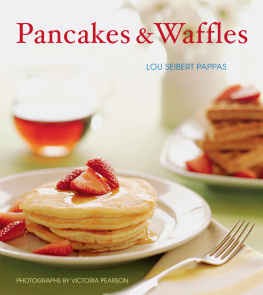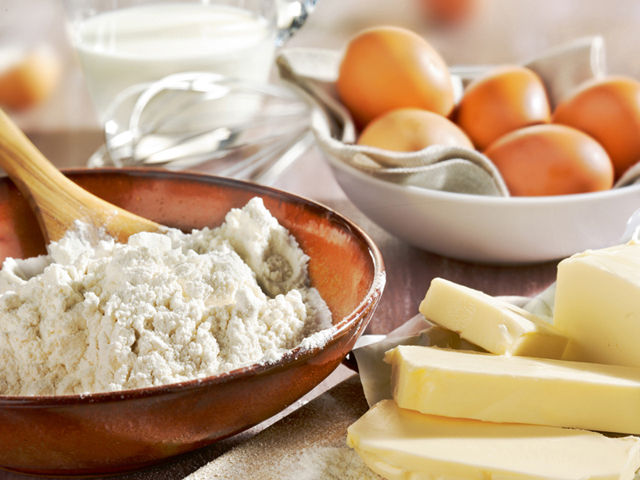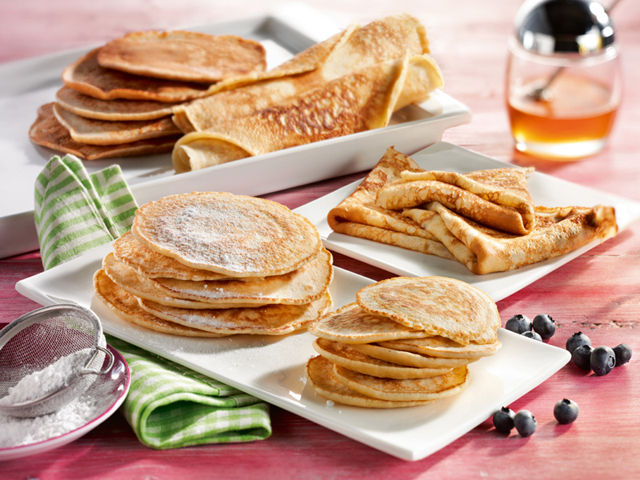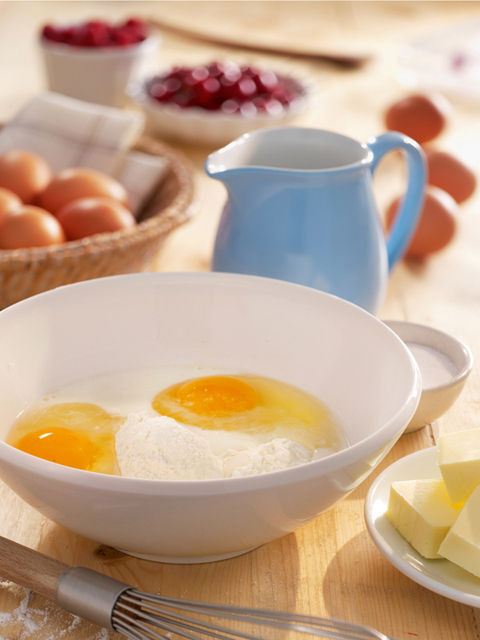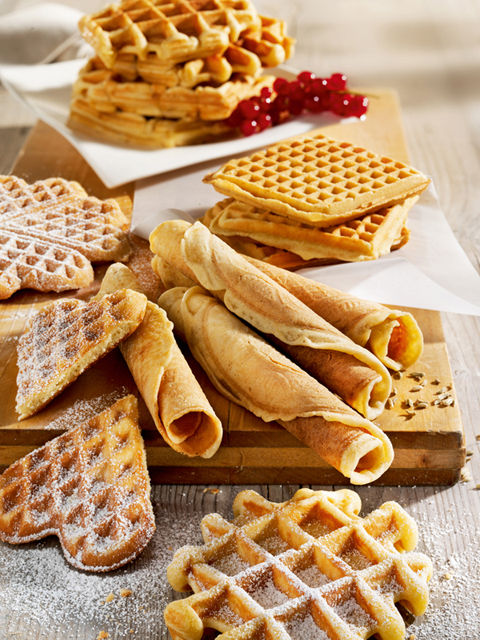Waffles,
Crpes & Co. Crispy, golden brown and fabulously sweet who can resist waffles and crpes? No wonder: theyre quick to make and versatile.The recipes can also be adapted serve with chocolate, fruit or cream, rolled up, folded, stacked, for breakfast, at coffee time or on kids birthdays. This lovingly put together book offers you the perfect recipe for every occasion. Plus, an extra chapter with great ideas for delicious jam and fruit compote toppings! Waffles,
Crpes & Co. Naumann & Gbel Verlagsgesellschaft mbH,
a subsidiary of VEMAG Verlags- und Medien Aktiengesellschaft
Emil-Hoffmann-Strae 1, 50996 Cologne (Germany)
www.vemag-medien.de
Front cover photo: StockFood/Schindler, Martina
Translation from German: Lindsay Chalmers-Gerbracht for SAW Communications,
Dr. Sabine A. Sabine A.
Werner, Mainz
Complete production: Naumann & Gbel Verlagsgesellschaft mbH
All rights reserved
ISBN 978-3-8155-8780-5 Contents
All about waffles, crpes & Co.! Quick to prepare Quick to prepare and unbelievably versatile: pancakes, crpes and waffles are always popular and provide a tasty snack as a dessert, a main course, with a cup of coffee or at any time in between. Just combine flour, eggs and milk and add other tasty ingredients and sweet or savoury fillings to produce quick, appetising and mouth-watering delicacies. Enjoy discovering our delicious creations in this book! One pancake is not like another Pancakes can be thick or thin, fluffy or solid, sweet or savoury, but are always round! Even the Romans already knew how to mix eggs and milk to bake thin pancakes. Flour was not added until mediaeval times. The simple basic recipe for pancakes with eggs and flour has undergone numerous regional and international transformations. In Germany alone, there are a large number of regional variations in preparation and names for the quick cake made in a frying pan.
In North Germany, for example, pancakes are called eierpuffer, plinsen in Saxony and schaffkuchen in Thuringia. In different regions in South Germany, they are known as pfannadeggel, pfannakuacha, eierdtscher. A classical salty variant is fldle, a pancake cut into strips and served in soups in the south-west of Germany. In Austria, this dish is termed frittatensuppe, in Switzerland fldlisuppe, in France consomm Clestine and in Italy brodo con tagliolini. Austrians prefer sweet pancakes and rave about palatschinken: these thin and fine pancakes are also a great delicacy in Czech Republic, Hungary and Balkan regions with both sweet and savoury fillings. Another highlight is the kaiserschmarrn which enjoys great popularity in southern Germany and Alpine regions.
You will come across a pannekoekenhuis almost everywhere in Holland offering rich and thick pannekoeken as well as the thinner flensjes and the small poffertjes which are only about the size of a coin.
The Russian answer to pancakes is
blini. These small thick pancakes are traditionally made of buckwheat flour (nowadays also with wheat flour) in a special small pan. Scandinavians enjoy pancakes at any time of the day. The Finns bake their
pannukakku in the oven and serve them with berries and vanilla ice cream. In Sweden, the popular
kolbotten are made with rye flour.
The British and Irish prefer their pancakes sweet and like serving them for breakfast. These pancakes are similar to the Dutch pannekoeken and are preferably served with lemon juice, sugar or syrup. The Scots make drop scones, a variant of the Dutch poffertjes. These are made by dropping spoonfuls of relatively stiff batter into a frying pan: drop scones are normally eaten with butter and honey and sometimes with sweet berries. They are perfect for tea.
American pancakes are very fluffy and thick.
They can be eaten plain, but are traditionally served with sweet maple syrup. Vive la Crpe! Oh l l Our French neighbours have certainly earned more than three stars for their famous wafer-thin pancakes, crpes and galettes. Breton pancakes, called krampouezhenn and served in many variations in crperies, have now become well-known almost all over the world. They are sold as snacks at markets and food stalls. In Brittany, crpes are always served with sweet accompaniments, for example with sugar, jam, fresh fruit or hazelnut spread, and are served folded or rolled up. In this region, there is a clear distinction between the sweet crpes and savoury galettes, whereas in other parts of France crpes are also served with savoury fillings such as ham, cheese, egg, fish or vegetables.
The crespella is the Italian sister of the crpe. It is far more frequently encountered with savoury rather than sweet fillings. Fine products from hot irons Waffles are crispy outside, moist inside and simply delicious. They are served in a wide range of both sweet and savoury variations. It is said that waffles originally developed from the wafers baked in special tongs in mediaeval monasteries which were consecrated and then served at communion. A special guild of waffle bakers already existed in thirteenth century France and the Dutch also soon learned the fine art of waffle-making.
These early waffles were very thin and frequently twisted into little rolls. Up to the present day, eiserkuchen are still made in East Germany, klemmkuchen south of Belin, hippen in South Germany and on the Rhine and krullkuchen in Hamburg, Bremen und Friesland; these products can be dried and kept for a long time. Thicker waffles made of butter, milk and eggs appear to have originated in Belgium or Holland as a special luxurious treat to be eaten at Christmas, New Year, before Lent and at weddings. Alongside heart-shaped waffles, the typically square Brussels waffles can be found in parts of Belgium and France.
How to make perfect pancakes, crpes and waffles! Although the ingredients in themselves are simple, there are a few things to remember when baking perfect pancakes, wafer-thin crpes and delicious waffles. If not otherwise indicated, always use type 405 flour.
You can also use other types of flour such as spelt flour, buckwheat or whole-grain flour, but you will then need extra liquid and a longer soaking time. Use unskimmed milk with 3.5 % fat content to ensure a smooth batter. You can also substitute carbonated mineral water for part of the milk. Adding melted butter to the batter makes pancakes & Co. wonderfully light and crisp. However, it is better to use clarified butter or if you prefer a neutral plant oil (rapeseed or sunflower oil) for baking, because butter burns quickly at high temperatures.
Tips for perfect pancakes: To make pancakes, all you need is a good-quality non-stick frying pan (28 cm in diameter) and a spatula made of heat-resistant synthetic material which will not scratch the surface of the pan. The mixed batter should be left for a while to soak, enabling the gluten in the flour to develop. This will make the batter particularly smooth. Lumpy batter is not good. This can be avoided by first mixing the dry ingredients before gradually adding first the milk and then the eggs. If persistent lumps have still formed and cannot be broken up by stirring, you can rescue your batter by pouring it through a sieve.
Next page
